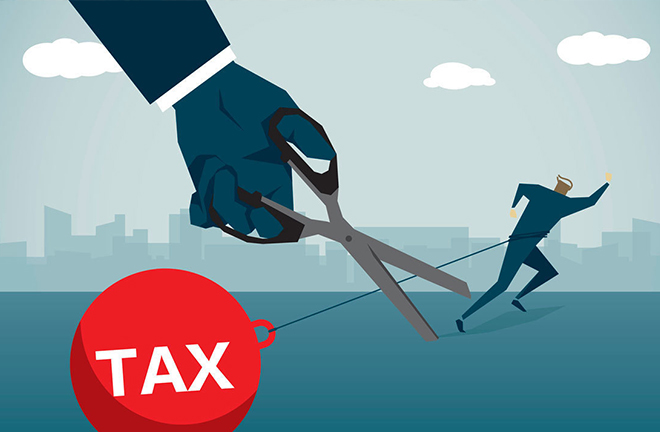Tax and fee reduction relieves enterprise pressure

FILE PHOTO: Policies on tax and fee reduction have again been emphasized in the “2022 Report on the Work of the Government.”
The tax reduction policy in China started with a pilot program that replaced the business tax with a value-added tax in 2013. Three years later, the policy was formally implemented in a comprehensive way to stir the vitality of enterprises. In addition, China has implemented supportive policies of fee reduction, such as postponing or even reducing social insurance premiums for enterprises, which greatly eased the pressure on enterprises’ cash flow.
New combined tax and fee policies
The tax and fee reduction continued in 2021, and the total reduction amounted to more than 1 trillion yuan. It can be said that the large-scale tax and fee cuts have provided an endogenous growth engine for China to cope with the economic slowdown and boost high-quality economic development.
Given this, the “2022 Report on the Work of the Government” clearly proposes the implementation of new combined tax and fee policies.
The balance of fiscal revenue and expenditure is an important prerequisite for the smooth implementation of tax and fee reduction policies. Therefore, close attention should be paid to the policies’ structure, and more innovative means are necessary—combined with fiscal and monetary policies—to ensure the long-term sustainable development of the reduction policies. While increasing the internal capital of enterprises through tax and fee cuts, we should, through monetary policies, give enterprises preferential treatment in terms of their loan availability and external financing costs.
Tax reduction for enterprises
According to the Ministry of Finance of the People’s Republic of China and the State Taxation Administration, China’s macro-taxation ratio (the proportion of tax revenue as part of the general public budget revenue in GDP) peaked at 18.6% in 2013. Since 2013, the ratio has decreased continuously, and it was predicted to fall to 15.2% in 2021.
Based on traditional economic theories, economic stimulation and job creation can be achieved through fiscal deficits and government spending, but fiscal spending is easily restricted by fiscal revenue. In contrast, tax cuts are more flexible. Especially for small- and medium-sized enterprises with limited capital, tax cuts can help them avoid the embarrassing situation of financial difficulties caused by cash flow pressure. In this way, large-scale enterprise layoffs can be prevented. For large enterprises with abundant capital, tax reductions mean that more internal capital can be allocated to invest in projects to expand production and stimulate employment.
Lowering social insurance premiums
Compared with tax reduction, the contribution rates for social insurance premiums are also of great significance to the smooth operation of the economy. Individuals tend to underestimate problems they may encounter due to disease, work-related injuries, unemployment, elderly care, and poverty during their long life spans. Without adequate measures to tackle these problems when risks occur, the social and economic burden incurred as a result will be shouldered by the government and even the whole society—this is the important reason why the government levies social insurance premiums across society.
For enterprises, social insurance premium expenses make up a large amount of their labor cost. These enterprises usually pass on the burden of the payment to workers by reducing wages, downsizing employees, and even changing contracts. The pressure on enterprises’ functionality, caused by premium payments, thus cannot be ignored.
Research shows that the burden of this premium will not only lead to enterprises having to reduce labor force employment, but also will easily prompt enterprises to adopt alternative strategies to allocate more liquid assets, such as stocks and bonds, as funds for precautionary purposes. This strategy aims to relieve the constraints on liquidity caused by social insurance premiums on enterprises’ daily operations. The consequence is that the operation of enterprises will be hindered, and the stability of the financial market will be objectively disrupted. Therefore, a reduction of the contribution rate for social insurance premiums can not only relieve the operating pressure of enterprises, but also help foster a more stable financial market.
Ye Yongwei and Zeng Lin are respectively from the School of Public Economics and Management at Shanghai University of Finance and Economics and the School of Economics at Jinan University respectively.
Edited by BAI LE
